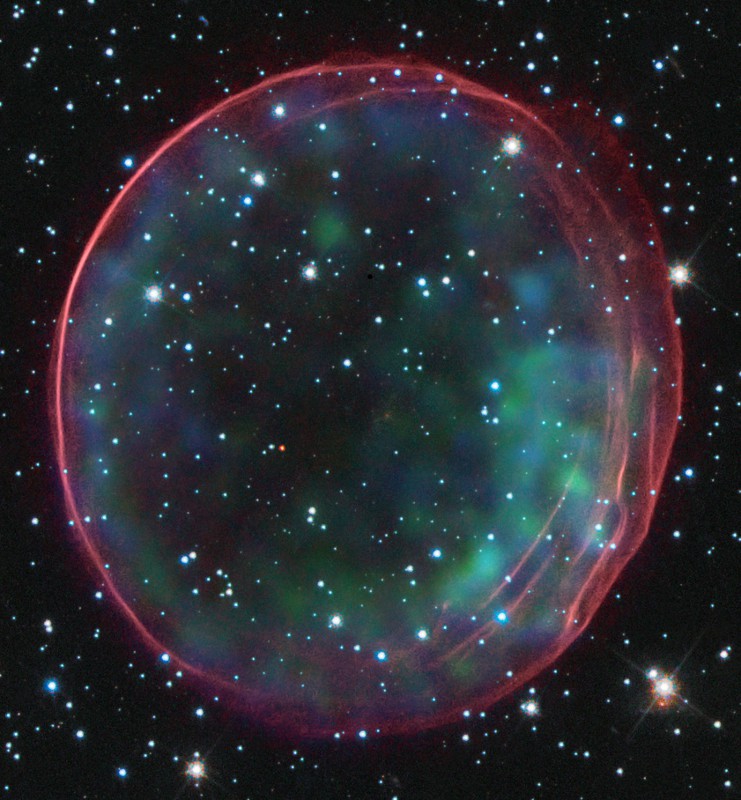Credit & Copyright: X-ray: NASA/CXC/SAO/J. Hughes et al.,
Optical:
NASA/ESA/Hubble Heritage Team
(STScI
/AURA)
Explanation:
Where's the other star?
At the center of this supernova remnant should be the companion star to the star
that blew up.
Identifying this star is important for understanding just how
Type Ia supernova detonate, which in turn could lead to a better understanding
of why the brightness of
such explosions are so predictable, which in turn is key to calibrating the
entire
nature of our universe.
The trouble is that even a careful inspection of the center of
SNR 0509-67.5 has not found any star at all.
This indicates that the companion is intrinsically very faint -- much more faint
that many types of
bright giant stars that had been previous candidates.
In fact, the implication is that the
companion star might have to be a faint
white dwarf,
similar to -- but less massive than -- the star that detonated.
SNR 0509-67.5 is shown above in both visible light,
shining in red as imaged by the Hubble Space Telescope, and
X-ray light, shown in false-color green as imaged by the
Chandra X-ray Observatory.
Putting your cursor over the picture will highlight the central required
location for the missing companion star.
Discovery + Outreach:
Graduate student research position open for APOD
1999 2000 2001 2002 2003 2004 2005 2006 2007 2008 2009 2010 2011 2012 2013 2014 2015 2016 2017 2018 2019 2020 2021 2022 2023 2024 2025 |
Январь Февраль Март Апрель Май Июнь Июль Август Сентябрь Октябрь Ноябрь Декабрь |
NASA Web Site Statements, Warnings, and Disclaimers
NASA Official: Jay Norris. Specific rights apply.
A service of: LHEA at NASA / GSFC
& Michigan Tech. U.
|
Публикации с ключевыми словами:
supernova remnant - binary star - остаток Сверхновой - сверхновые типа Ia - двойные звезды
Публикации со словами: supernova remnant - binary star - остаток Сверхновой - сверхновые типа Ia - двойные звезды | |
См. также:
Все публикации на ту же тему >> | |
Мнения читателей [2]
